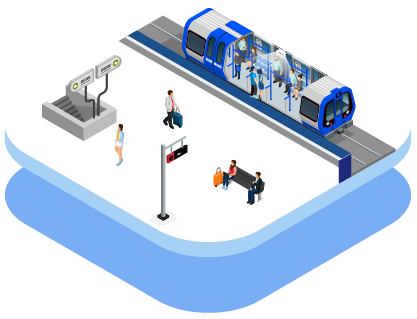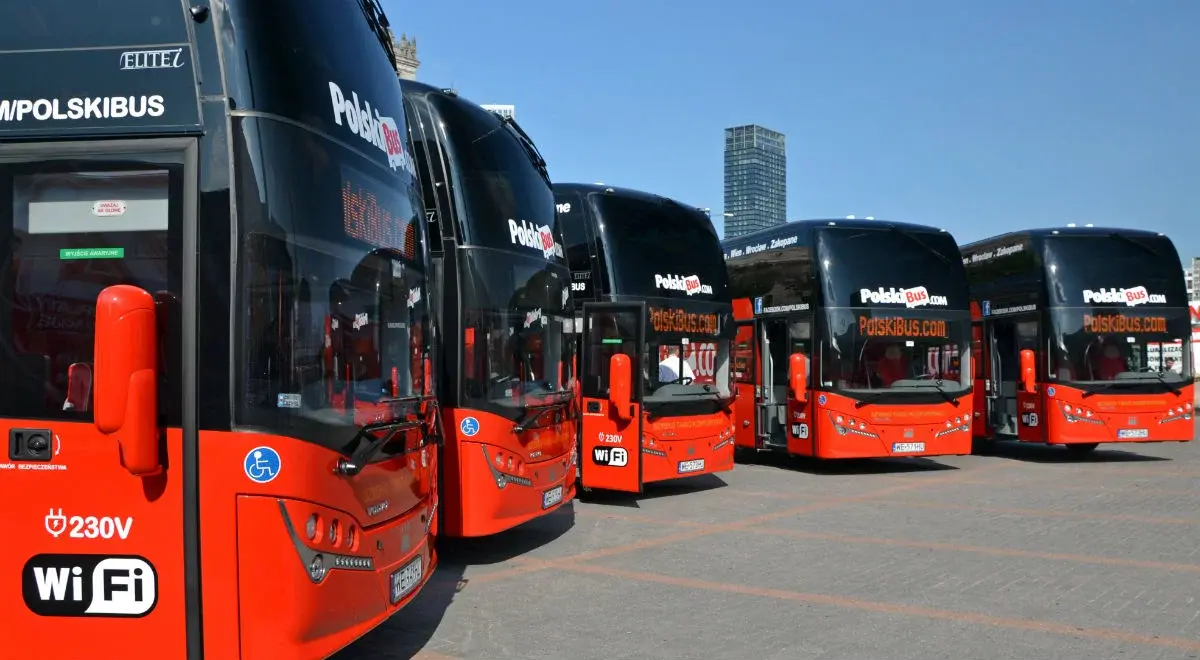Today’s growing population and urbanization lead to an increasing demand for transportation, requiring a corresponding expansion in mass transport systems. Passenger flow analytics are not just numbers; they are the heartbeat of efficient transportation systems. Without accurate data, mobility providers struggle to optimize routes, manage congestion, and enhance the traveler experience.
The number of passengers is the most critical metric for transportation providers. However, traditional passenger counting systems often fall short by only tracking entries, rather than both entries and exits, leading to inaccurate occupancy data. A full train is great for efficiency, but if passengers are uncomfortable, they won’t come back. Data helps us find the balance. This lack of precise insights creates challenges in route and vehicle optimization, resulting in inefficiencies that impact both operators and passengers.
Smart people counting isn’t just about tracking numbers—it’s about understanding behavior, patterns, and making better decisions. With advanced automated passenger counting systems like V-Count, urban transportation providers can move beyond simple counting, unlocking real-time insights that improve efficiency, enhance the commuter experience, and drive systematic progress in the urban mobility sector.
What’s an Automatic Passenger Counting System (APC)?

Automated Passenger Counters (APC) is advanced sensor-based system that automatically track passenger movement in and out of transit vehicles. APCs accurately count and log the number of people boarding and exiting buses, trains, rail networks, ships, and other forms of public transport.
Unlike manual passenger counting, which can have an average error rate of 15%, APC technology significantly improves the accuracy and reliability of ridership data collection. This enhances public transit planning, scheduling, and route optimization while reducing operational inefficiencies.
APC devices are increasingly adopted by transit operators seeking greater accuracy in reporting and data-driven decision-making. These systems allow providers to analyze passenger use patterns by linking boarding and alighting data with specific stops and station locations.
The Cutting-Edge Technology Behind V-Count’s Passenger Counters
The V-Count Ultima AI sensors use cutting-edge active 3D stereo vision technology to count passengers reliably with an accuracy of up to 99% even under no light conditions. V-Count presents the data it generates instantly both on the cloud-based Business Intelligence Platform and on independent platforms by integrating 3rd party solutions with Rest-API integration options.
Data from automatic passenger counting systems are crucial for developing transport concepts for the cities of tomorrow, not just for transport companies but also for operators, authorities, and municipalities. Passenger counting data is a valuable source of knowledge for a wide variety of urban transport issues. The data can be leveraged to evaluate the services provided, react quickly to current traffic situations, and strategically develop future services.
How Does Automatic Passenger Counting Work?

Passenger counting works by installing a people counter sensor over each door. The sensors detect the passengers as they enter and exit. The counting data is instantly transferred to the cloud platform as actionable reports, allowing instant real-time access to valuable information and data-based decision-making.
With the reporting screens, instantaneous data can trigger real-time actions on a vehicle or route basis. At the same time, historical reports constitute the most important data used for route, vehicle, and stop optimization. By detecting and interpreting passenger density at various scales, a passenger counting system can ensure the efficient use of vehicles while maximizing passenger satisfaction.
Benefits of Using the V-Count Automated Passenger Counter for Passenger Counting
- Real-time data of passenger occupancy
The real-time collection and processing of data allow for vehicle optimization by using live vehicle occupancy information. This includes a wide range of options for improved planning, optimization, and evaluation of traffic networks.
- Increased customer satisfaction
By sharing the real-time occupancy data from each train unit with passengers, they can be directed to available seats while still waiting on the platform. Passengers can then spread out among the vehicles in an optimum way to increase traveling comfort.
- Flexible adjustment of vehicle capacity
Long-term historical passenger counting data allows public transport companies to optimally adjust their vehicle capacities according to transport volume. This means deciding how many train units must be deployed and on which lines; this way, transport providers can adapt and adjust vehicle capacities to meet the actual demand. By understanding vehicle capacities and passenger volume, transport companies can also determine and optimize the useful life of the vehicles based on user volume.
- Vehicle equipment in line with passenger requirements
Automatic Passenger Counting uses advanced and sophisticated technology that provides more data than just passenger numbers. The sensor system can reliably distinguish between passengers, baggage, and objects like wheelchairs, bicycles, or strollers. This allows for a more reliable determination of the space required in the vehicle and the implementation of wheelchair access ramps as needed.
- Efficient optimization of routes
Occupancy reports data from Automatic Passenger Counting provide the ideal basis for efficient route optimization. Public transport companies can recognize transport demand and adapt on a network level.
- Reduced costs
Passenger counting systems are cost-efficient and highly accurate. They collect and provide differentiated data on transport performance, providing the basis for precise cost reduction based on performance
- Increased profits from transport advertising
Public transport advertising is remarkably effective due to its repetition and high frequency of advertising views. Transportation companies that provide advertising services on their vehicles can share the people counting data with ad agencies to encourage them to advertise on their vehicles and determine their impact. Advertisers can also select specific routes and vehicles with higher occupancy rates to achieve higher impressions.
- Controlled payment systems and ticketing
By comparing the number of sold tickets with the number of people counted, transport providers can cross-check and have more control over ticketing systems to ensure transparency and avoid any discrepancies.
The Future of Smart Transportation
Data-driven decision-making is transforming the way cities plan and operate transportation networks.
V-Count’s Automated Passenger Counting System enables accurate, real-time data collection, helping transit providers improve efficiency, passenger experience, and operational profitability.
By leveraging AI-powered analytics, real-time tracking, and historical reporting, transport companies can:
✔ Reduce congestion
✔ Optimize vehicle use
✔ Enhance passenger comfort
✔ Adapt to urban mobility challenges
In an era where every passenger is a data point, understanding commuter behavior is key to creating smarter, more efficient transit solutions. With V-Count, the future of urban mobility is data-driven, efficient, and passenger-focused.







